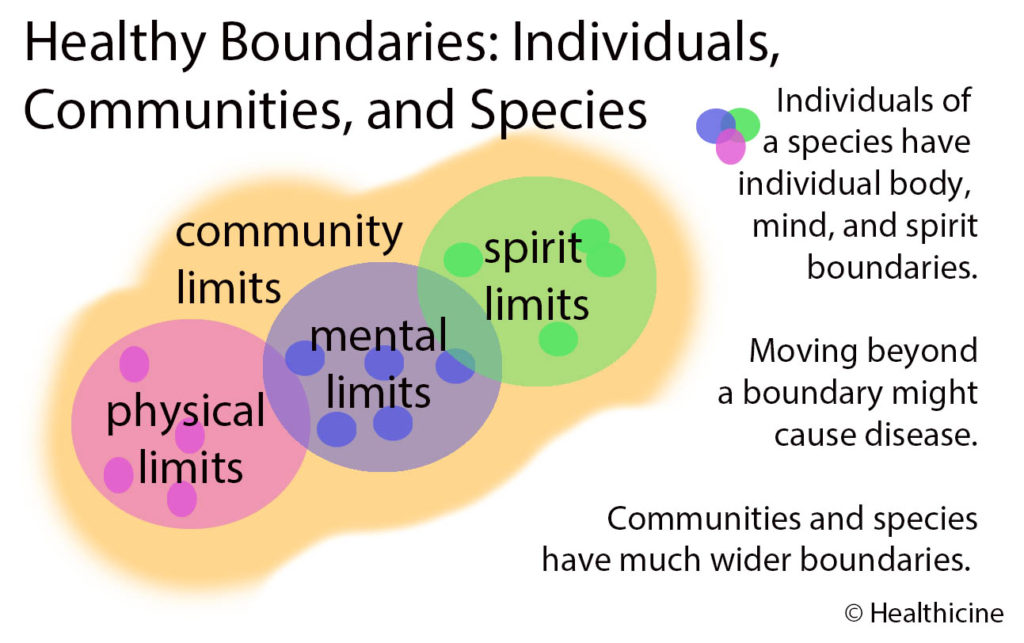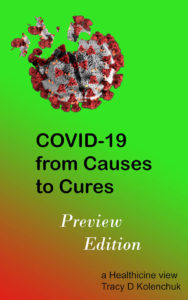 Imagine… What if we could eliminate ALL diseases?
Imagine… What if we could eliminate ALL diseases?
Would we be healthier?
Can a disease be healthy? The word disease has many meanings. We often think of disease as caused by an infectious agent, a narrow view.
Most disease causes of death are non-infectious.
This diagram illustrates the World Health Organization’s International Classification of Diseases, which includes infectious diseases (colds, flu, measles), non-infectious diseases (cancer, depression, diabetes, scurvy), and injuries (cuts and bruises, broken bones, gunshot wounds). All have disease codes. All are diseases.
There is a gradation between infectious diseases, non-infectious diseases, and injuries. Sometimes the distinction is clear, sometimes – far from clear. Is a gingivitis infection an infectious disease, or an infection that results from unhealthy – diseased teeth and gums? Are the teeth damaged and lost from a gingivitis infection:
- injuries?
- non-infectious diseases?
- the consequences of an infectious diseases?
- consequences of a non-infectious disease?
There are no simple answers. It is also challenging to distinguish between disabilities and diseases. It seems clear that Type 1 Diabetes is a disease – although the cause is a disability, the absence of islet cells. Both words, disease and disability, entail stigma, making judgments and distinctions more complex. Are blindness and deafness disabilities or diseases? Is autism (not well defined medically) a disability, a disease, or something else?
The word disease can refer to any medical condition, infectious, non-infectious, injury, or disability, simple or complex, diagnosed, diagnosable, or not.
Does any disease have a purpose? No, no disease is alive.
Humans have purposes. Even a snail has a purpose. Some causes of infectious diseases are alive. They have a life purpose but – not a disease purpose. Viral causes of disease are not considered to be alive. They have a simple goal – reproduction. They do not eat, excrete, grow, exercise, rest, learn, forget, nor grow old. They do not live and do not die. However, most causes of disease are non-infectious, not alive and have no life goals.
Humans have goals. One of our goals is to prevent and cure disease. We might speculate a world without disease. What kind of world could that be? “Why do illnesses and diseases occur?” The answer is surprising.
Species Healthiness
We generally view illness and disease as individual cases. From that perspective, it’s easy to see only negative aspects. A case of illness or disease is a negative situation for the individual, by definition. Epidemiology sometimes takes a bit wider view – but still negative.
From a species perspective, we can see a different reality. Every species exists in competition and cooperation with other species. Each individual in a species lives in cooperation and competition with other members of the species – and other species as well. Individuals who fail to compete, fail to survive, fail to reproduce, and their species fails to evolve forward. As a species, our bodies, our lives, all individuals, need to excel, to extend the boundaries of the species. When we fail to challenge our healthy boundaries, our species misses opportunities to live, grow, reproduce, and evolve. Life forms that successfully challenge and expand their species boundaries are more successful.
Species don’t get sick. Only individuals get diseases. But, a species with no disease is one that takes no risks, one that misses many opportunities to excel, one likely to die out.
As individuals, when we challenge a life boundary, we might get sick. Sometimes, we survive, learn, and expand our limits. By challenging our individual limits, we might gradually learn to travel to the depths of the ocean, or the heights of the moon stars. But not without risks.
We need to be constantly challenging the boundaries of our bodies, our minds, our spirits, and our communities. When we do so, some people will get physical injury diseases, or mental disorders, some might suffer depressed or manic spirits, or even diseases of community like rioting, war, and genocide. We move our abilities and our healthiness forward by addressing and curing these diseases. Prevention is not always better than cure – when we have a disease, prevention is no use. Avoiding disease entirely limits our abilities and accomplishments.
Usually, when we get sick, we survive and cure our illness. Sometimes, perhaps too often, we fail to cure, but we learn to live with our disease. Survival makes our species stronger. If not, we die – leaving the gene pool, which might later successfully challenge that boundary.
At the species level, a certain level of disease is necessary, even as it causes illness in some individuals. For the species to win, individuals must take risks. No species can win all battles without risk, without some losses, without some disease.
Of course, not every disease, and not every case of disease, is healthy. All cases are unhealthy at the individual level. At the species level, we must study the healthiness of disease for a comprehensive view.
to your health, tracy
Author: The Elements of Cure
 This post is part 1 of the chapter: On the Healthiness of Disease from the book: COVID-19 from Causes to Cures. In the next post in this series, I will discuss the healthiness of Injury Diseases. The book is based on the concepts of cure published in The Elements of Cure and the paper A Theory of Cure.
This post is part 1 of the chapter: On the Healthiness of Disease from the book: COVID-19 from Causes to Cures. In the next post in this series, I will discuss the healthiness of Injury Diseases. The book is based on the concepts of cure published in The Elements of Cure and the paper A Theory of Cure.
The second post in this series can be seen here:
On the Healthiness of Disease: Part 2, The Healthiness of Injuries


